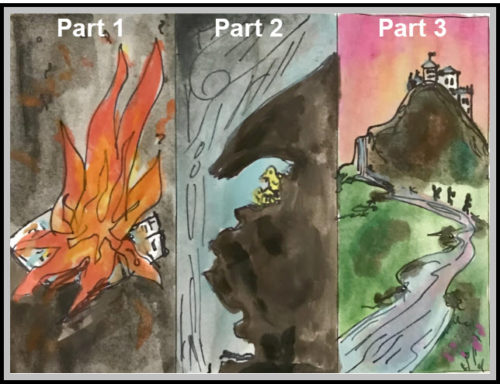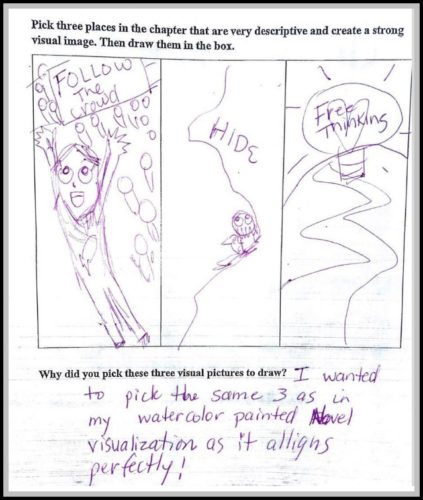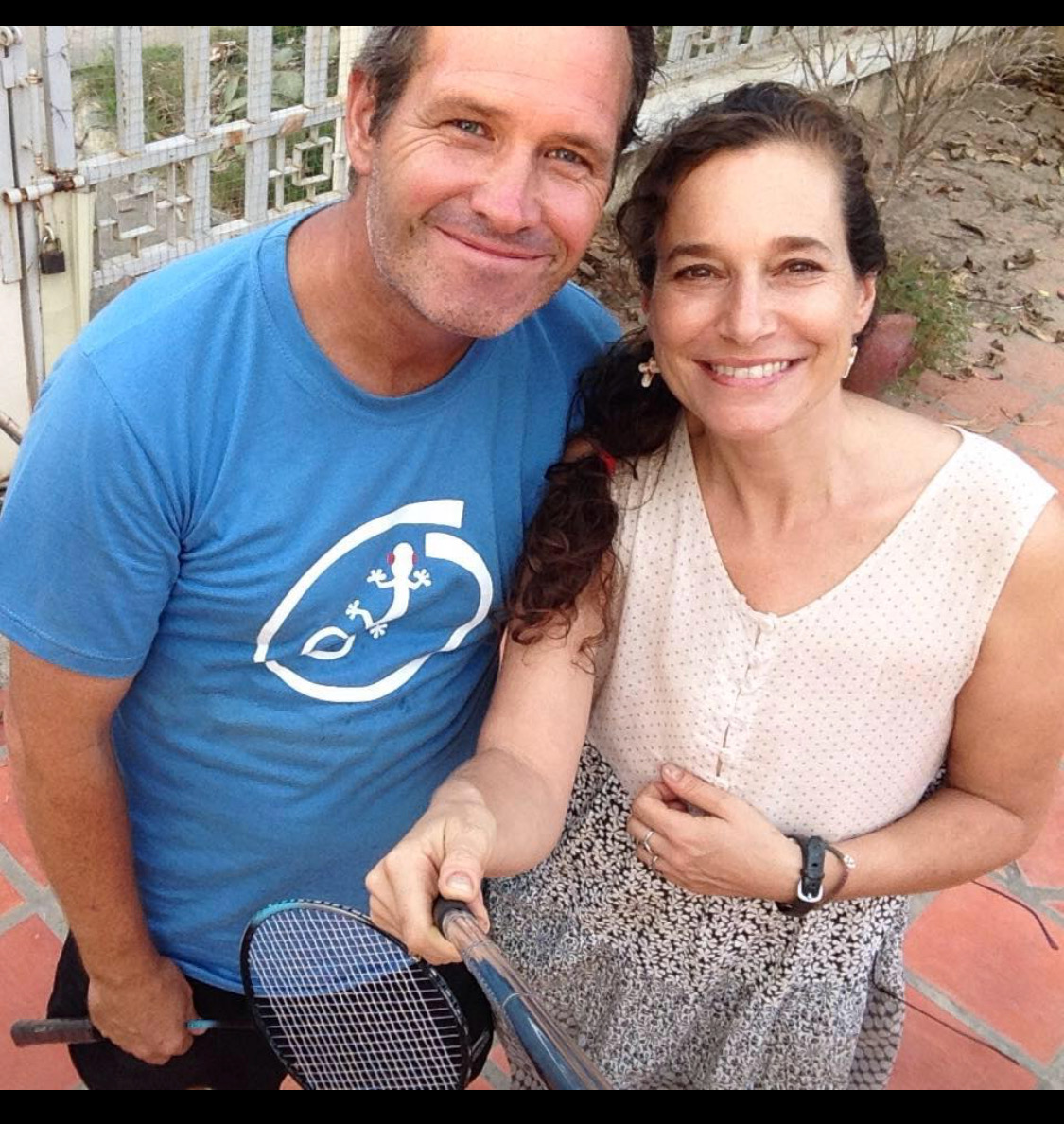Remember those great “Crossover” episodes of your favorite TV shows, when you’d see a hero from one show jump into a scene with the characters in another show? As educators, we’re always looking for ways to do the crossover in our classes: How can we integrate content from various disciplines? What follows is a series of student work from Renee Smith, an art teacher who has used some great strategies to integrate English Language Arts with Visual Art through visualization.
Fahrenheit 451 – Visual Images with Synopsis
Pick three places in the chapter that are very descriptive and create a strong visual image. Then draw them in the box.

Why did you pick these three visual pictures to draw?
Burning Fire Image in the first box to show how society demanded the burning of books in Part 1 of the novel. “The whole house is going up,” said Beatty, ”..as they were being burnt alive..” (p.36 & 37).
The hidden bird family in Part 2 represents the fact that to keep a book you had to hide it or it would be burned. Our novel follows Firefighter Guy Montag throughout his turmoil of a love for books and the hiding of books, then to finding a secret hidden society that cherishes the written book and the thoughts within books.
The Hope of the ending, Part 3, is of going upstream to the hope of rebuilding a future generation of free thought and one without censorship of burning books. I represented this with the upward hike toward a new city on a hill. A hopeful vision leaving the ashes of the burned down city and depression behind.
____________________________________________________________
Title: Why Do People Follow the Crowd? By ABC News
Provide a synopsis of the text and describe what you visualized.
The text synopsis is that we are like a herd of cattle following the crowd. We as a society in general are not being free thinkers and giving thought to what we do when we fill our time and minds with what society puts in front of us. We just follow the crowd instead of thinking about what we are doing even if the crowd is doing evil and hurting others.
I visualized burning, hiding then going to a higher level of thinking and free thought of kindness apart from the crowd of evil doers. All 3 parts paralleling the novel Fahrenheit 451. Quote from the text, “ vicious instance of conformity — why so many Germans followed Adolf Hitler down the path to death and destruction.”
List the words or phrases that assisted in creating pictures in your mind.
vicious
Hitler
path to death
Destruction
follow the pack
Amygdala
Conform
Fear
good and evil
right and wrong
smart or stupid
Conformist
Below is a passage of text support for my theme, based on the connections described above. (Quoted from CommonLit connections reading titled “Why Do People Follow the Crowd?”)
Conforming Can Have Dangerous Consequences
Both of these tests are examples of our human need to conform. In fact, Berns’ experiment is a variation of one done many years ago by another scientist trying to decipher an extremely vicious instance of conformity — why so many Germans followed Adolf Hitler down the path to death and destruction. Berns says there are two ways to explain conformist behavior.
I agree with this passage and the conclusion quoted below:
“What that suggests is that, what people tell you — if enough people are telling you — can actually get mixed in with what your own eyes are telling you,” Berns said.
And for those who went against the group, there was another intriguing result: Their brains lit up in a place called the amygdala, which Berns calls “the fear center of the brain.”
“And what we are seeing here, we think, is the fear of standing alone,” Berns said.
So why do people follow the pack no matter how ridiculous it seems? Perhaps it’s not so much about good and evil, right and wrong, smart or stupid. It might be, as Berns’ experiment suggests, that our brains get confused between what it sees and what others tell us.

If you have some favorite “crossover” experiences in your classrooms, we would love to hear how you’ve been able to integrate other content areas in your classroom. Submit your ideas and strategies here.




